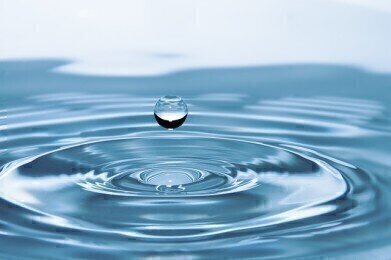Analytical Instrumentation
An Introduction to Water Quantification
May 25 2019
As a pervasive liquid, water can attach to most materials and is often naturally occurring. As a result, the ability to measure moisture content is an important part of many industries, from food packaging to petroleum sales. To do this, scientists rely on the latest moisture analysis methods. Techniques are chosen based on the composition of the material that's being tested, as well as availability of time and budget. Read on for an overview of the most popular techniques, as well as their advantages and limitations.
Loss on Drying (LOD)
Simple yet effective, the LOD method is the most common way of carrying out moisture analysis tests. It involves weighing a substance sample, heating it to remove all moisture, weighing it a second time and subtracting the difference to determine water content.
Karl Fischer Titration
The water-specific Karl Fischer Titration method overcomes the issues of volatiles and uses a solvent to separate moisture from the substance. The procedure is carried out in an airtight container and relies on a reagent to convert water into a non-conducting chemical.
Capacitance and Radio Frequency
Both the Capacitance and Radio Frequency techniques offer almost immediate results, though call for the development of individual calibration charts for each substance. This can be time consuming for researchers.
Near Infrared (NIR)
The NIR technique is underpinned by the intrinsic association water has with Near Infrared wavelengths. It used a specialised light to illuminate samples and records moisture content based on the amount of energy reflected by water. Results are instantaneous.
Water Activity
Also known as aW, the Water Activity method is gaining popularity for its efficient and cost-effective credentials. Instead of measuring moisture content, it records how much water is released by a product at a certain temperature. Outcomes play an important part in determining the shelf life of food products. It's also used by pharmaceutical and cosmetic companies.
Want to know more about how advanced technology is being used to determine water content in foods, pharmaceuticals, petroleum products and other consumer products? Don't miss 'Supelco’s Watercol™ Ionic Liquid Capillary Columns Coupled with TCD and Shimadzu’s BID for Detection and Quantitative Analysis of Water by Gas Chromatography' which explores the limitations of conventional techniques and introduces the benefits of ionic liquid capillary columns.
Digital Edition
PIN 25.1 Feb/March
March 2024
In This Edition Safety - The technology behind the ION Science Tiger XT - Safety with ammonia and LOHCs as hydrogen carriers Analytical Instrumentation - Discussion on new tribology te...
View all digital editions
Events
Apr 28 2024 Montreal, Quebec, Canada
Apr 30 2024 Birmingham, UK
May 03 2024 Seoul, South Korea
May 05 2024 Seville, Spain
May 06 2024 Riyadh, Saudi Arabia


















